Most of us have become so accustomed to Gaza’s suffering that we can hardly imagine a world without it. But imagine we must. During the fighting this summer, and in its aftermath, many believed the war would be a game-changer, that something would have to give — it hasn’t. Activists, intellectuals and diplomats continue to advocate, but what about the Gazans themselves? Beyond violence, what is their role in ending the siege and attaining freedom? Samer Badawi tackles the questions — and the answers — left buried in the rubble.
By Samer Badawi
This is the first time that +972 is highlighting a story instead of a person of the year — a story chosen by our bloggers and editors. We asked Samer Badawi, who spent most of the war reporting for +972 from inside the Strip, to write the story of the year: Gaza.
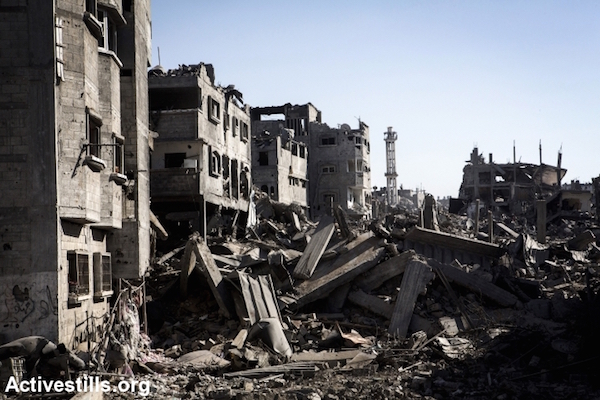
If “Operation Protective Edge” had its battles, their outcome was measured not in ground gained but in Palestinian lives lost. In Jabaliya, Gaza’s largest refugee camp, I met a young man, Alaa Balata, who had lost all 11 members of his immediate family in a single shelling. In Gaza City, the al-Batch family lost 18 in one F-16 strike. And on and on. Just like that.
For those who survived, the trauma this time seemed to defy comparison. A World Bank executive visiting just after the war said she had “come across many war zones, but none compare to this.” A visiting American psychologist dubbed Gaza “a PTSD nation.” And the Columbia Journalism Review said the war had “pushed reporters to their mental and physical limits.”
That much I knew. In a Ramallah café just after I had left Gaza, I met a fellow American journalist who, like me, had spent some of the fiercest days under Israeli bombardment. By then, the adrenaline had subsided and I’d had a few nights of sleep uninterrupted by drones, F-16s, tank fire or battleship shelling.
I was one of the lucky ones. I had gotten out.
My colleague asked how I was doing. I told him how an Israeli film crew had asked me to describe the sounds of war in Gaza. I couldn’t. Instead, I thought of Muhammad, whose charred one-year-old body I had seen a week earlier at Gaza City’s al-Shifa Hospital.
I couldn’t answer the question, I told him. I just cried.
It’s true: a writer writes; he cannot right wrongs. But something about the sheer weight of Gaza’s suffering — in wartime and under siege — stunts language, too. I’m supposed to be a writer. But I have not written a word about Gaza in more than 100 days. I couldn’t.
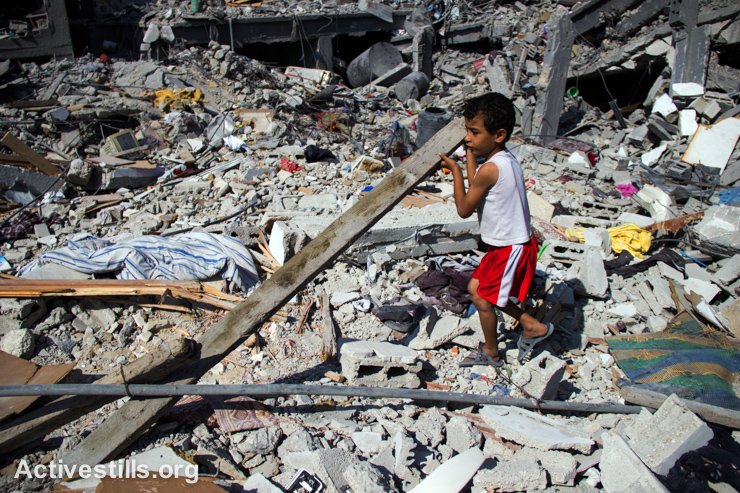
Why? I think it’s because when it comes to Gaza there are no easy answers. On one level, nothing matters beyond the face of a child, so shell-shocked that it seems singed of expression. But on an analytical level, there are — simply — no new ideas.
I blame this on a growing gap between Gazans’ perceptions of their reality and those of outside observers. Most people I met in Gaza view their struggle as part of a larger Palestinian resistance, forcing Israelis and the rest of the world to reckon with the realities of a brutal military occupation. That its brutality is more extreme in Gaza — after all, no Israeli commander could order the strafing of Jerusalem or of settlement-bound Ramallah — is a source of pride. It is pained, to be sure, but not at all defeatist. No, there is a palpable sense of defiance in Gaza, despite the killing, despite the siege.
But this is hardly the narrative the rest of the world hears or propagates. No matter your take on Hamas, chances are you view the people of Gaza as hapless, powerless victims: at best, they are hostage to “ruthless” militants; at worst, they are militants themselves, hell-bent on lobbing rockets at Israel — and for seemingly no reason at all. Either view is cynical, for it denies agency to the very people at the heart of Gaza’s story.
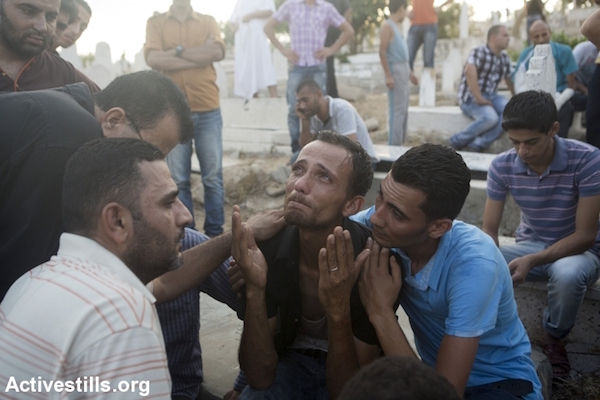
Gazan Journalists like Mohammed Suliman shattered that default by live-tweeting what they saw and heard. In one of Suliman’s most poignant posts, he sounds, at once, resigned to his fate — “I look forward to surviving” — and determined to define his own legacy:
“If I don’t [survive], remember that I wasn’t Hamas or a militant, nor was I used as a human shield. I was at home.”
The post was re-tweeted more than 12,000 times, and Vox called Suliman’s Twitter feed “harrowing.”
But to meet Suliman — or to read his full account of the attacks — is to come away with a different impression. Yes, the reality he described is deeply distressing. But to those enduring the bombs, there is a larger point. Palestinians, Suliman wrote in an August 1 tweet, “are defending themselves [emphasis added] against Israel’s brutal occupation and siege of Gaza and its racist settler colonialism in West Bank.”
That, perhaps, is why every Palestinian I met in Gaza, even those most steeped in its horrors — a missing relative or limb, a tent pitched atop the ruins of what had been home — referred to this story-of-the-year as a war.

Wars, after all, can be conjured in the abstract. Writ large, “World War II” was a cataclysm of history, not an indictment of humanity itself. We study the forest because we dread the trees — the gassing at Treblinka, the fire bombing of Dresden.
In Gaza, this was the third war in six years. For its victims, still under fire, there is no sense in seeing its component parts: four children killed on a beach, seven more at a playground swing, more than a thousand orphaned, and all — to a child — forever changed.
Others, though, are too keen to remember. Barely a week after my exit from Gaza, where I had been with friends and fellow journalists at the height of Israel’s assault, I was berated by a fellow Palestinian for referring to the 51-day spectacle of violence as a “war.”
“This wasn’t a war,” he insisted. “This was a massacre.”
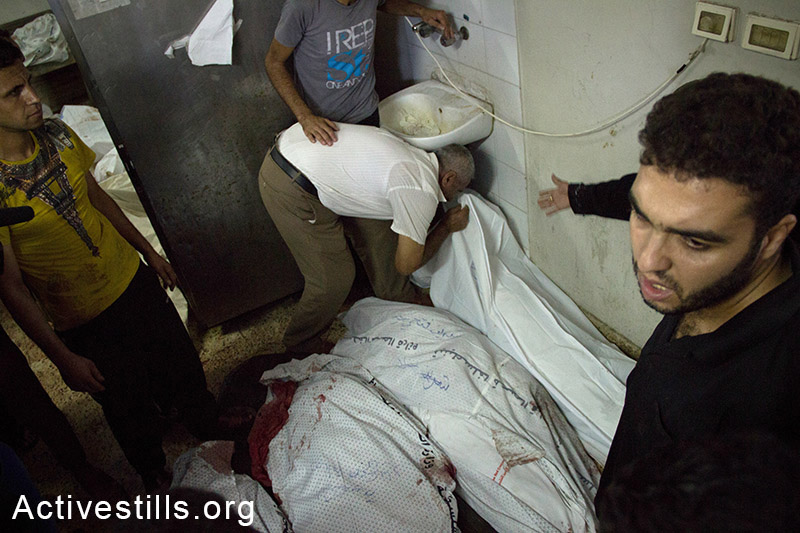
In his voice, I recognized the rage, the helplessness we all feel when we witness human suffering from afar. Survivor’s guilt strikes a particularly shrill note of righteous anger.
I didn’t ask when he had last been to Gaza. I didn’t need to. For one thing, I knew all too well how difficult it was to find a way into the besieged territory. Two years ago, after months of wrangling with Egypt’s’s embassy in Washington, I made the long trek through the Sinai only to be delayed a day by the Egyptian authorities at Rafah (they had closed the crossing, as is their custom, on a whim). And this summer, the Israelis finally let me in after I personally appeared at the Government Press Office in Jerusalem, only to be grilled by its director, who asked with a smirk: “You realize this is a war, right?” Just to be sure, his office made me sign a waiver declaring: “I am aware that armed hostilities are currently taking place in and around Gaza.”
But we Palestinians, my compatriot reminded me, weren’t supposed to use the word “war.” How could we? Hundreds of children had been killed, entire villages had been reduced to rubble, and a quarter of Gaza’s population had been displaced — some of them refugees twice over. It didn’t matter that Gaza’s Palestinians had used the word themselves.
This is a dangerous epistemic gap, a gap between what Gaza wills and what “outsiders” (a word that bears little nuance given the siege) seem unwilling to accept. Why dangerous? Because this gap has, I believe, kept Gaza in a perpetual cycle of suffering. The sad truth is that we have all become addicted to this tragedy. All of us — Palestinians and Israelis, activists, policymakers — need Gaza to suffer.
That may sound jarring. But ask yourself: What else can upend the status quo? What, if not another tragedy in Gaza, can so command the attention of the world’s media, its actors and musicians, its diplomats and doyens? What else can draw hundreds of thousands to the streets of the world’s capitals, prompting speeches, social media “trends,” and suddenly iconic photos of civilians slaughtered or mothers wailing?
Yet despite the best intentions of activists or journalists, the Gazans I met do not think of themselves as victims. Let’s be clear about this: The “massacres” — all very real, to be sure — serve a purpose for the rest of us. They are our rallying cry.
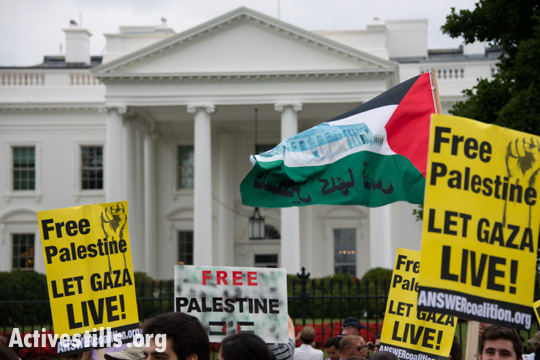
But what exactly are we rallying behind? There isn’t a single actionable proposal for lifting the siege that does not include Hamas. Yet I, for one, have yet to see a protest banner or placard with the word Hamas on it, at least among protesters siding with Palestinians. And the most articulate of Palestine advocates still can’t answer the question: do you think Hamas rockets are a legitimate form of resistance?
Most probably don’t. But if those same activists, diplomats, politicians and doyens are going to claim to work in the interests of Gaza’s Palestinians, they must at least engage the question. If we disagree with Hamas, what alternative do we propose? And most important, if we have no alternative, can the rallies and righteous anger — which materialize precisely because of the massacres that so repulse us — be anything but irresponsible?
There is nothing wrong with drawing energy and determination from Gaza’s steadfastness (sumoud in Arabic), but we must be wide-eyed in our understanding of two things.
First, although the Gazans I spoke to are proud to inspire solidarity and resistance, that mantle is heavy and no one would carry it for its weight alone. The point is freedom, not suffering.
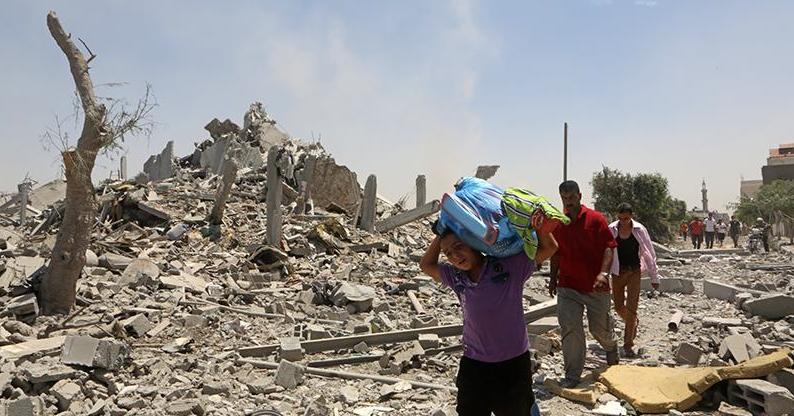
Second, if sumoud is this war’s lasting mark on the Palestinian movement, it must — as all successful liberation movements have — ultimately find effective ways to convert steadfastness into liberation. In other words, those of us who are activists must work our way out of a “job.”
This is not so easy, especially in the West Bank. On my way there from Gaza, I spent a day with a local activist from the Jerusalem neighborhood of Issawiya, where Israeli police had sealed all but one entrance and regularly deployed so-called “skunk trucks” to intimidate local protestors. I asked my companion why he thought Jerusalem erupted during the war while the West Bank — with one notable exception — remained largely quiet. “Easy,” he said. “We don’t have a Palestinian Authority to stop us.”
Those Palestinians living under the “Authority” — a creation of Israel and the United States — knew it. Still, activists there found creative ways to catalyze popular outrage over Israel’s assaults. If they couldn’t take to the streets without risking bloody confrontation with fellow Palestinians, they also didn’t remain quiet.
In markets from Tulkarem, where I had gone to visit family just after the war, to Ramallah and its neighboring villages, activists stepped up efforts to grow support for the burgeoning international boycott movement. In village markets and larger grocery stores, window stickers urged shoppers to forego Israeli products. In one Ramallah market, I overheard a father telling his daughter to put back a pack of chips because it was Israeli-made. And in the village of Bil’in, where I also spent a few days with a friend after the war, the Friday sermon ended with a reminder that “buying local” was itself a form of resistance.
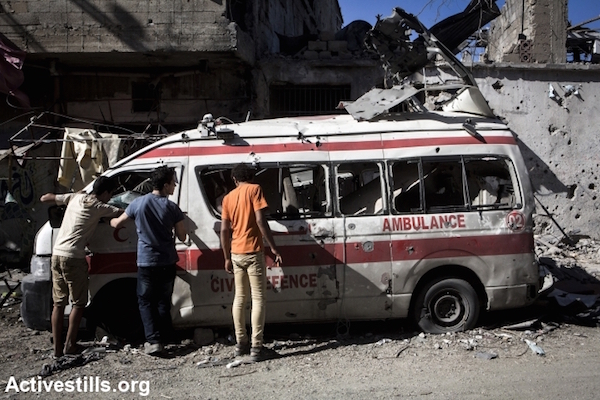
While I was in Bil’in, I spent an evening not far from the scene of the village’s weekly protests against Israel’s illegal wall, which has swallowed up ever more of the West Bank’s land in the past decade. The scene was made famous by the Oscar-nominated film “5 Broken Cameras,” its narrative arc formed from more than 700 hours of raw protest footage shot by Bil’in’s native son, Emad Burnat. When I asked Burnat whether the Gaza war had any impact on the resistance here, he told me that what mattered most — in Bil’in as in Jerusalem — was stamina. “Some weeks, we’ve had fewer activists than usual at the protests,” he said, “but the point is, there is a protest.”
“Every week, no matter what, there is always protest.”
Meanwhile, outside my hotel room in Ramallah, a giant screen flashed advertisements for luxury cars and laundry detergent. In between were images of crying children amid scenes of destruction. “Donate today,” the screen urged. “Send a text message now to help our people in Gaza.”
When I checked in via video chat with my friend and fellow journalist in Gaza, Jehad Saftawi, he asked what the mood was in the Palestinian Authority’s de facto capital. I turned my laptop’s camera toward the massive screen outside. “That’s nice,” Jehad said. “It looks like Hong Kong.”
And there you have it. The people of Gaza have been sealed off from the world for so long that Ramallah might as well be China. To be sure, for many in the West Bank and beyond, Gaza is just as foreign. But there are real people in Gaza — people like one-year-old Muhammad — who seem destined to continue their sacrifice so that those who protest and rage and mourn may have their reasons to continue, too.
They shouldn’t have to wait till the next massacre, though. And neither should the people of Gaza.
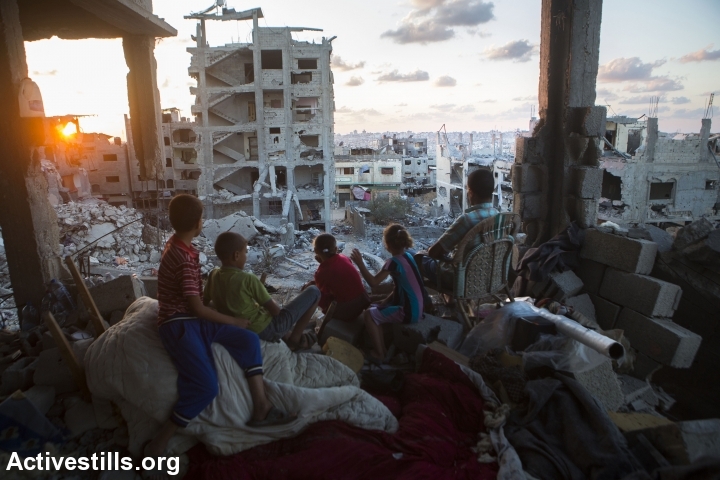
When I last spoke with Jehad, he had finally emerged from weeks of depression, during which he insisted that he would find a way to leave Gaza, to enjoy—as his wife and photojournalist Lara Aburamadan once wrote —“the simple textures of a day spent outside, of a sky that beckons but does not bellow.”
But Jehad had changed his mind. “I’ve decided to stay, Samer,” he told me. “We have work to do.”
After 100 days of struggling for answers, I finally had mine. All of us — journalists, activists and, most of all, Palestinians themselves — have become so accustomed to Gaza’s suffering that we can hardly imagine a world without it. But imagine we must. For Gaza is more than its casualty counts, and wars are not just rallying cries.
Read also:
+972’s Editor’s Picks of 2014
The 25 most-read posts of 2014
+972’s Person of the Year 2013: Edward Snowden
+972’s Person of the Year 2012: The Settler
+972’s Person of the Year 2011: Woman activist of the Arab world
+972’s Person of the Year: Abdullah Abu Rahmah

